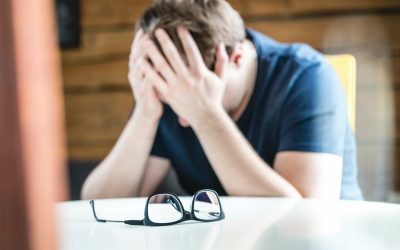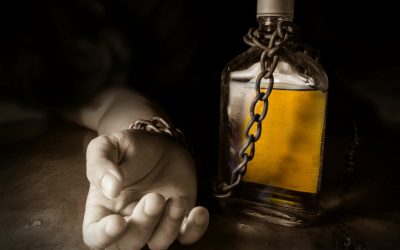This project is ideal for individuals who may feel lost, overwhelmed, and even isolated. The lighthouse activity is designed to give participants hope for their future. Art therapy can help anxiety by promoting calm and relaxation, giving an outlet for emotional expression, and helping to boost self-awareness and self-image. It works with other therapies such as CBT or medication to help soothe and lessen the symptoms experienced by those with anxiety – but is not a substitute for holistic treatment.
Art And Hidden Beauty Of Scars: How To Turn Flaws Into Strengths
I have more than once heard someone say that they were surprised that they could come up with so many things for their leaves. On each leaf write one thing that helps you get through a difficult time – this can include personal strengths, coping strategies, enjoyable activities, and supportive people. To get you started, we have compiled a list of prompts that have helped others get the most from their art journal. Prompts are a great way to explore topics you might not consider yourself and can be great to have handy on days when inspiration feels lacking. Facing these deep emotions can be overwhelming, especially as recovery is beginning.
Mindfulness in Addiction Recovery: Powerful Tools for Lasting Sobriety
Color in each circle with a different color. Once the colors have dried, apply different colors to each circle to see what the new color will look like. Get your hands messy and https://yoder-chiropractic.com/blog/methadone-side-effects-dosage-uses-and-more-3/ have a good time with finger painting, spreading the paint, creating shapes and blobs and anything that comes to mind. Use it to be at peace with imperfections by creating not-so-straight lines, uneven colors, and patchy shading. After you’re done, fill the bag with items that you feel best represent yourself.
- Instead of writing down a New Year’s resolution, create an object that visually represents a promise you have made to yourself.
- The potency of art therapy becomes even more evident when applied to adults in recovery.
- Photo therapy sessions often cover assignments that may include taking pictures of places or things that bring joy, represent challenges, or symbolize hope.
- These can help you maintain focus, essential for meditative practices, and offer a form of non-verbal expression that can release trapped emotions.
Collage
Draw a plot in the air with your fingers. The exercise develops imagination, communication skills. Use a pencil to draw a circle with a diameter that matches the size of your head. Find a center and start drawing from it, depicting a specific figure, and let the composition of your drawing form by itself.
- Art provides a universal language, a way to express the inexpressible, and a safe space to explore the complexities of the human psyche.
- To give you the maximum amount of time to focus on the sessions and the needs of your patients and to promote your workshop, consider using a workshop booking software system.
- Collaborative murals, group sculptures, or even community art installations can foster a sense of connection and shared purpose among individuals in recovery.
Importance of Recovery Through Creative Expression
Trace your arm and hand, leaving the tips of the fingers open (picture 1). This will become the base of your tree – your arm is the trunk of the tree and the fingers are the beginning of branches. Share with group members where you are in your recovery journey. Talk about your accomplishments and your goals.
Finding support and community through art programs can greatly enhance the recovery journey. Many rehabilitation centers offer art therapy groups, providing a safe space to create and share with others who understand the unique challenges of addiction. For those not in formal treatment, community art classes or online art groups focused on recovery can offer similar benefits. ECHO Recovery is a community filled with people who once felt they had no direction. For recovery painting ideas many of us, artistic expression provided the key we needed to unlock new ways to improve our mental state.

It’s an intertwining of emotion, memory, and expression. It serves as a bridge, connecting the often indescribable chasm of personal experience with tangible, visual representations. Through colors, shapes, and textures, art therapy offers what is alcoholism a safe haven for introspection and release, a place where trauma can be processed, and healing can flourish.
In guided painting sessions, recovery is a collective experience. You often find support from your peers who are on similar paths. Witnessing the art of others can foster connections and provide new perspectives on the recovery journey. One of the most wonderful aspects of painting therapy is its lack of prerequisite skill.
This tactic involves the manifestation of elements of the subconscious, for which there is no willingness or ability to be voiced. Expression through art can help individuals communicate their feelings and take the next steps to recover. It’s known to be therapeutic and supportive in developing self-awareness and exploring emotions. A variety of art project ideas focus on the creative process that is beneficial to the recovery process. Remember to take the needs of each individual into account, even during group art therapy activities.

This neural symphony has profound psychological benefits. Creating art can reduce stress, anxiety, and depression by lowering cortisol levels and increasing feel-good neurotransmitters like serotonin and dopamine. It’s like a mental massage, soothing our frazzled nerves and offering a respite from the chaos of daily life.
Bringing Art Therapy Prompts for Addiction Treatment to Your Recovery
Make a physical representation of the anger or sadness you feel or have in your life. You can create shapes, structures, and images that show your emotions. Think about your emotions and the colors that best represent those emotions.
For a more personalized experience, consider seeking out certified art therapists. They can guide the process, ensuring it aligns with your therapeutic needs. The artistic process is inherently empowering. The creator has control over the medium, the subject, and the outcome, providing a sense of autonomy often needed by those in recovery or grappling with mental health challenges.